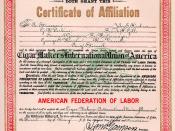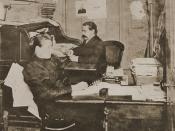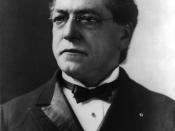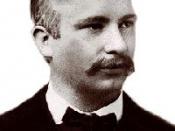The Labor Movement in the 1920s
As a correction to the wartime effort, inflation and unemployment increased because there was not a need to mass-produce products for war, and America had to return to "normalcy". The amount of labor unrest increased during this time period, which is very obvious by the increase of labor strikes.
There was a strike by the United States Steel Corporation workers in 1919. They were annoyed with their seven 12 hour workdays a week. The leader of the American Federation of Labor joined the International Workers of the World (which was a communist group dedicated to freeing the bonds of workers) after the strike. A committee published a report that illustrated the horrible working conditions, which eventually caused steel companies to reduce to an eight-hour day.
The United Mine Workers went on strike in hope of receiving better wages and a shorter workday. Attorney General Palmer got a court order that told the strikers to return to work.
Lewis formally declared the strike over, but it continued for another month until Wilson appointed an arbitrator to decide the remaining issues. The Mine Workers received a 27 percent pay increase, but the same hours.
The police in Boston wanted pay raises and sent a group to commissioner Coolidge, to hear their demands. Coolidge fired the group and the rest of the force went on strike. The National Guard restored the peace and Coolidge hired a new police force and granted the demands of the strikers.
During this time period a group of stores called chain stores were becoming popular, they spread throughout the country, were owned by one person, and charged lower prices for products. The 122 million U.S. citizens began losing their jobs because of the throng of migrating immigrants who worked for low wages, modern technology becoming useful in the make of products. Working men had a hard time adjusting to women that were also fighting against inequality for the right to work. Because of prosperity, labor unions lost membership from 5 million in the early 20's to 3.5 million by the late 20's. Corporate and Government attack on labor strikes became extremely intense. People who participated in strikes were beaten and sometimes killed. And last a small fact, the average annual income for the typical American worker was only $1,574.





